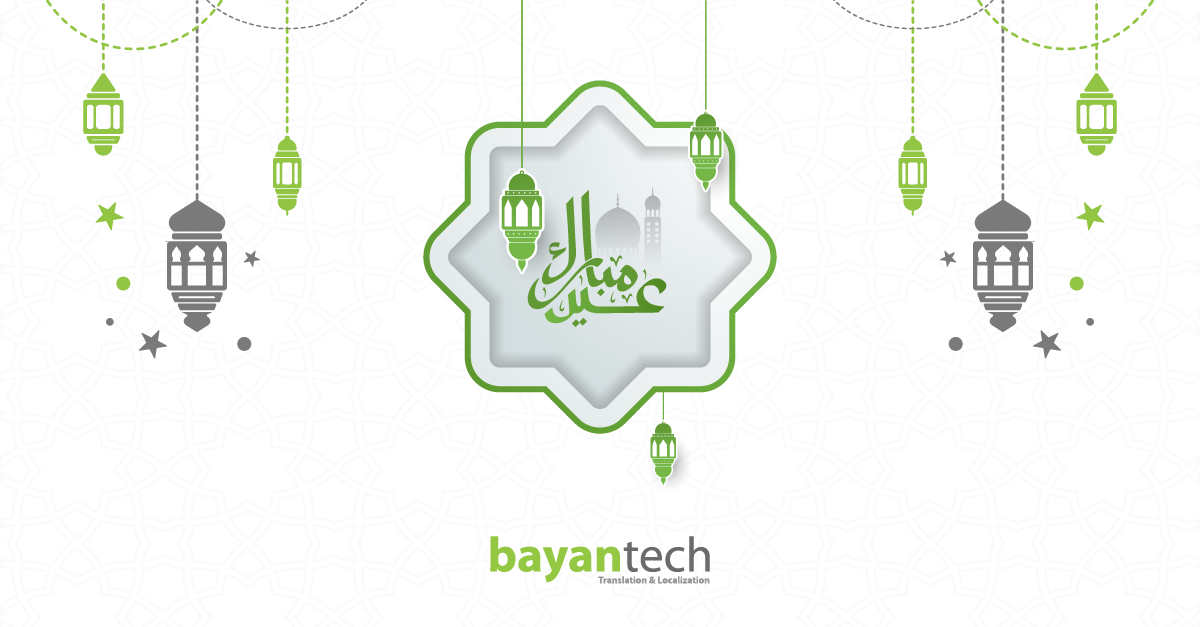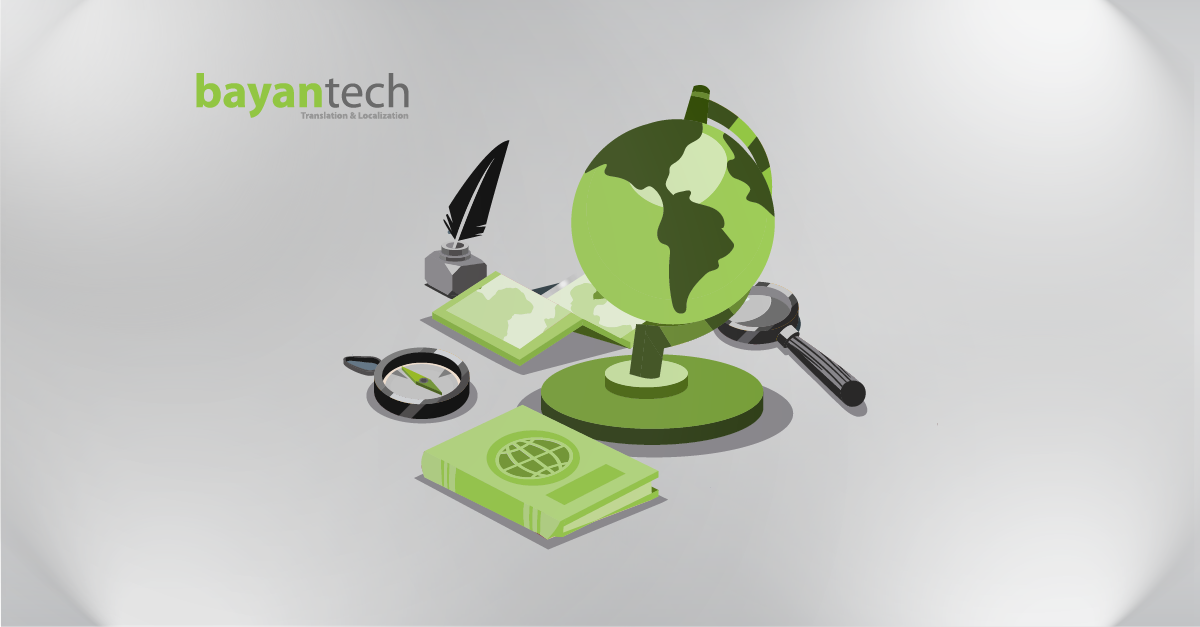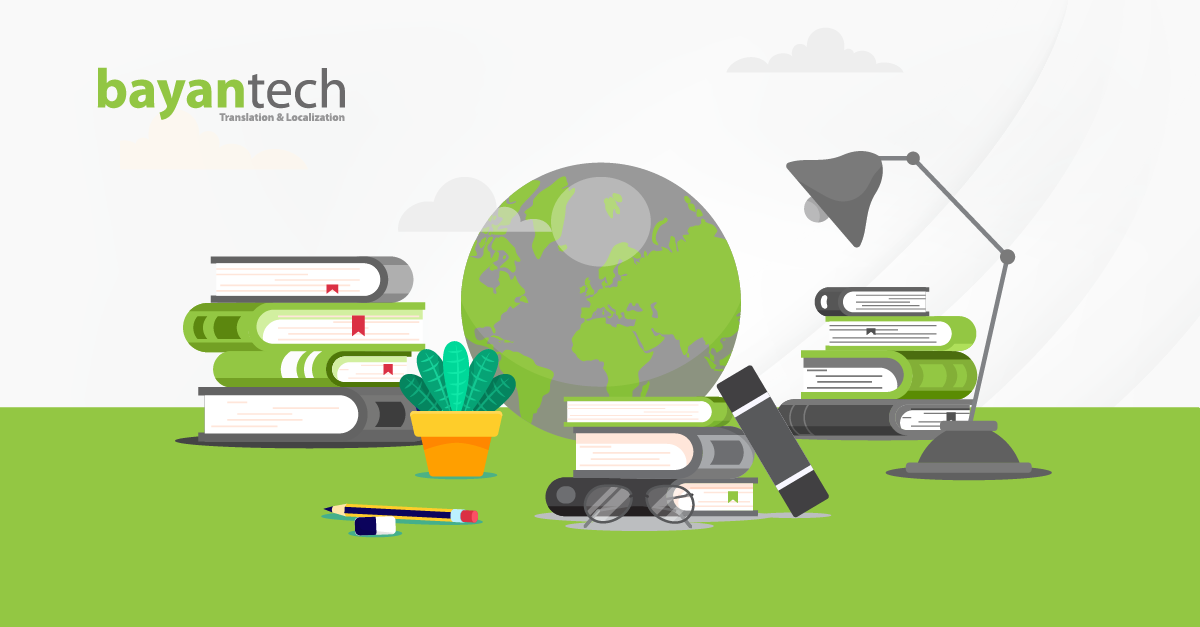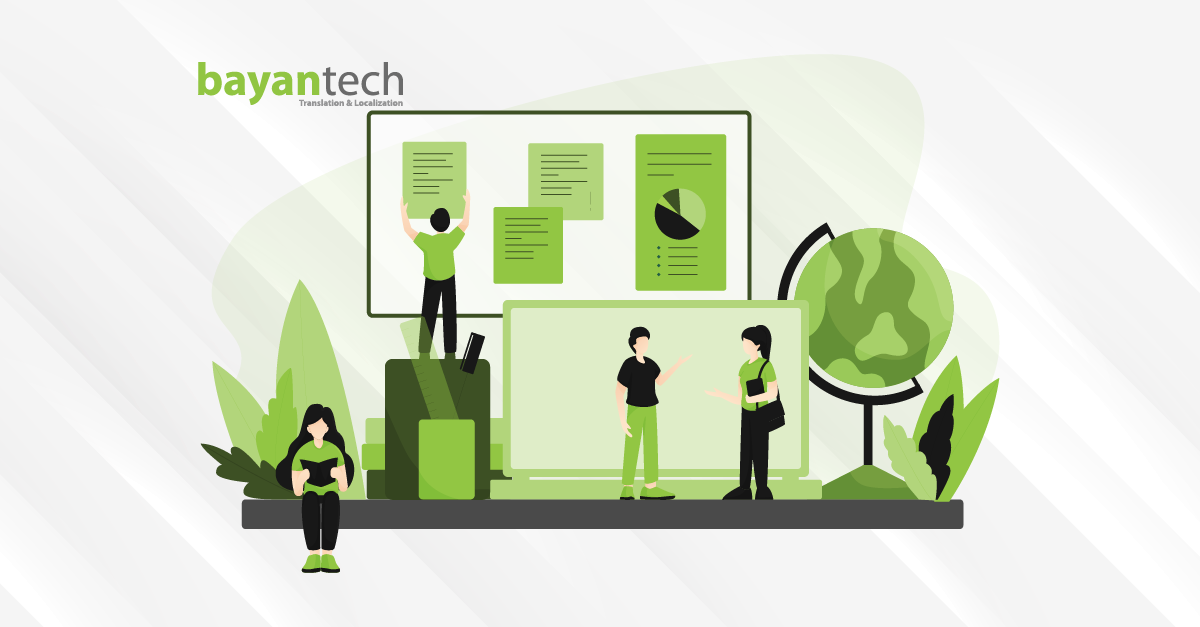Every year, as the crescent moon marks the end of Ramadan or the conclusion of Hajj, Muslims around the world come together to celebrate, with family, food, prayer, and one deeply meaningful phrase: Eid Mubarak.
If you’re preparing a greeting for your colleagues, crafting a message for your customers, or simply curious about how people say “Happy Eid” in different parts of the world, this guide is for you.
Understanding the cultural significance and linguistic nuance behind this phrase is essential for building genuine connections. In this guide, we’ll explore the different versions of Eid Mubarak translation, learn how to avoid common pitfalls, and find out how to create greetings that resonate across cultures.
“Eid Mubarak” Across the Arab World: Regional Variations and What They Really Mean
“Eid Mubarak” (عيد مبارك) literally translates to “Blessed Eid.” It’s the most widely used Arabic festive greeting during the two major Islamic holidays: Eid al-Fitr (celebrating the end of Ramadan) and Eid al-Adha (marking the culmination of the pilgrimage to Mecca). This greeting isn’t just a polite phrase, it’s a sincere wish for joy, blessings, and peace.
Depending on region and dialect, variations exist. You might hear:
| Greeting | Dialect/Region | Meaning | Response |
| Eid Mubarak (عيد مبارك) | Universal | Blessed Eid | Eid Mubarak / Khair Mubarak |
| Eid Sa‘id (عيد سعيد) | Pan-Arab | Happy Eid | A’layna wa a’leykom / Eid Mubarak |
| Kol ‘am wa entou bekhair (كل عام وأنتو بخير) | Levant, Gulf | Wishing you all goodness every year | Wa entou bekhair |
| Kol sana wa anta/i tayeb/a (كل سنة وأنت طيب) | Egypt | I wish you goodness every year | Wa anta/i tayeb/a |
| Mabrouk el Eid (مبروك العيد) | Morocco | Congratulations on Eid | Allah yebarek feek/i |
| Eidkum mubarak wa asakum min uwwadah | Gulf | May you go on to witness many Eids | Mubarak ‘alayna wa alaikum inshallah |
These variations highlight the cultural and regional flavors that shape how Muslims celebrate and communicate. For global businesses and organizations, being mindful of these distinctions is essential.
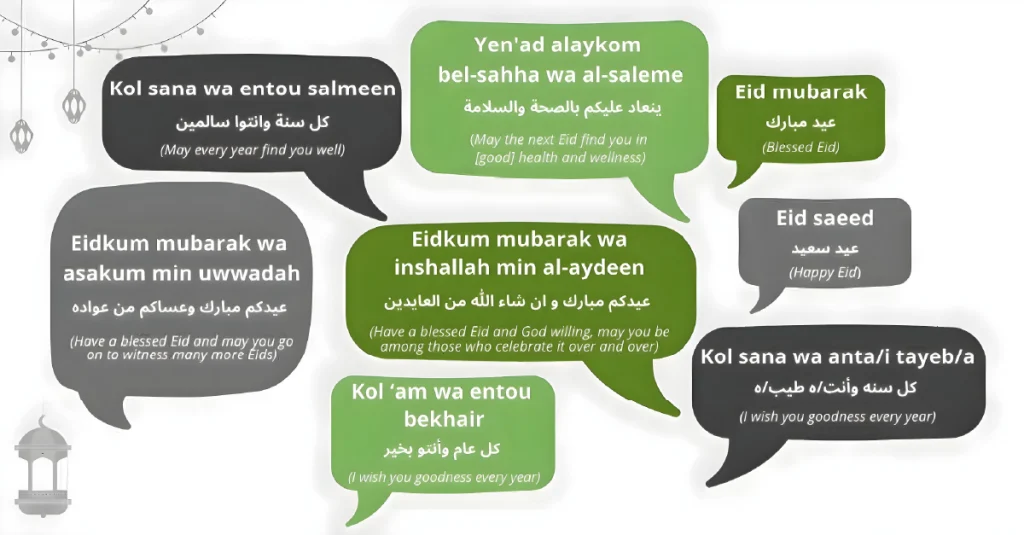
How to Translate Eid Greetings for Global Audiences
Translating Eid Mubarak in English is straightforward—it becomes “Blessed Eid” or more commonly, “Happy Eid.” But the real challenge lies in capturing the spirit behind the greeting.
Here’s how Eid greetings are expressed in other major languages:
- French: Bonne fête de l’Aïd
- Urdu: عید مبارک (Eid Mubarak – same script, culturally rooted)
- Turkish: Bayramınız kutlu olsun
- Bahasa Indonesia: Selamat Hari Raya Idul Fitri/Idul Adha
- Swahili: Heri ya Iddi
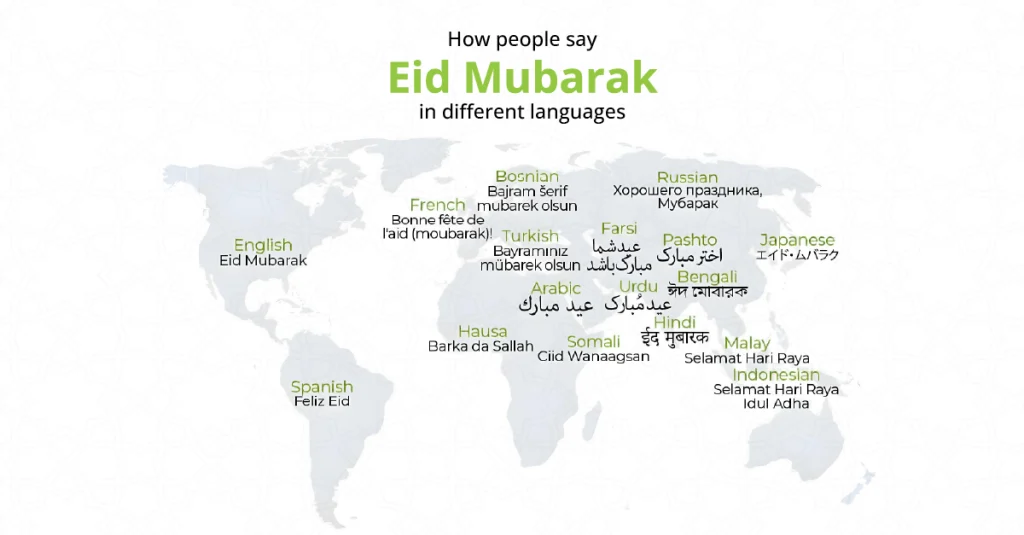
Each version reflects not just linguistic accuracy but cultural adaptation. Literal translations like “Eid Sa‘id” might seem correct, but without context, they can feel forced or unfamiliar.
One of the most common pitfalls? Translating Eid greetings word-for-word without considering dialect or regional usage. What resonates in Cairo may feel out of place in Casablanca or Kuala Lumpur. Differences in dialects make professional localization essential.
Why Accurate Eid Translation Matters in Business Communication
If your company sends an employee Eid message, a client Eid greeting, or a public holiday announcement, the tone and wording matter. An inaccurate or awkwardly phrased message can come off as inauthentic—or worse, disrespectful.
A corporate Eid greeting that’s professionally translated shows cultural awareness and builds brand credibility. Businesses that invest in professional greetings ensure their Eid messages feel personal and genuine.
- It Reflects Cultural Respect
Using the correct greeting variation for the audience shows you value their traditions and understand cultural nuances.
- It Enhances Brand Trust
A well-worded Eid message strengthens emotional connections with clients, partners, and employees who celebrate.
- It Avoids Awkward Miscommunication
Literal or incorrect translations can lead to confusion or unintentionally offensive phrasing.
- It Boosts Global Engagement
Tailoring greetings by region, such as “Mabrouk el Eid” in Morocco or “Kol sana wa anta tayeb” in Egypt, helps you resonate across diverse Arabic-speaking markets.
- It Reinforces Your Commitment to Inclusion
Thoughtful, localized greetings support a more inclusive brand image, especially in multicultural teams or customer bases.
Eid Greetings in Multilingual Marketing Campaigns
Whether you’re running ads in Jakarta or publishing social media posts in Dubai, Eid greeting localization services go beyond translation. They ensure that your messaging is visually and linguistically aligned with your audience’s culture.
Tips for Multilingual Eid Greetings
- Images Matter: Use culturally appropriate visuals—like lanterns, crescent moons, or family gatherings—not generic festive symbols.
- Copy Consistency: Match your translated Eid greetings with the tone of your brand voice in every language.
- Hashtags & CTAs: Use relevant hashtags like #EidMubarak or #SelamatHariRaya alongside translated calls to action.
- Pick the Right Platform: Match your message to where your audience is—Instagram in MENA, WhatsApp in South Asia, TikTok for Gen Z.
- Time It Right: Start early, 2–4 weeks ahead, to ride the Eid momentum. Think mobile-first for families on the move.
- Honor the Culture: Respect local traditions. Celebrate values like family, giving, and togetherness, without relying on clichés.
Work With bayantech Experts to Deliver Eid Greetings That Resonate Globally
As a professional translation company, we at bayantech localize with care, cultural sensitivity, and precision. Our team of professional translators and regional experts ensures every piece of content reflects the true spirit of its target audience across all languages.
With ISO-certified quality assurance, 24/7 availability, and secure workflows, we offer expert Arabic translation services and a variety of language solutions across 120+ languages, ensuring your message reaches your audience on time and with meaning.
FAQs – Eid Translation Questions Answered
Q: What’s the difference between Eid Mubarak and Eid Kareem? A: “Eid Mubarak” means “Blessed Eid” and is more commonly used. “Eid Kareem” means “Generous Eid,” typically associated with Eid al-Fitr, but not universally used across all regions.
Q: Is Eid Mubarak used for both Eid al-Fitr and Eid al-Adha? A: Yes. “Eid Mubarak” is appropriate for both major Islamic holidays and is widely understood among Arabic and non-Arabic speakers.
Q: How do you ensure the accuracy of translated Eid greetings? A: We rely on native translators, cultural reviewers, and multiple proofreading layers to ensure accuracy and cultural relevance.
Q: Can you localize Eid greetings into multiple languages? A: Absolutely. We offer multilingual Eid greetings in English, French, Turkish, Urdu, Bahasa, and many more.
Q: What file formats do you accept for Eid greeting projects? A: We accept Word, PDF, design files (AI, PSD, INDD), and custom formats for print and digital use.

